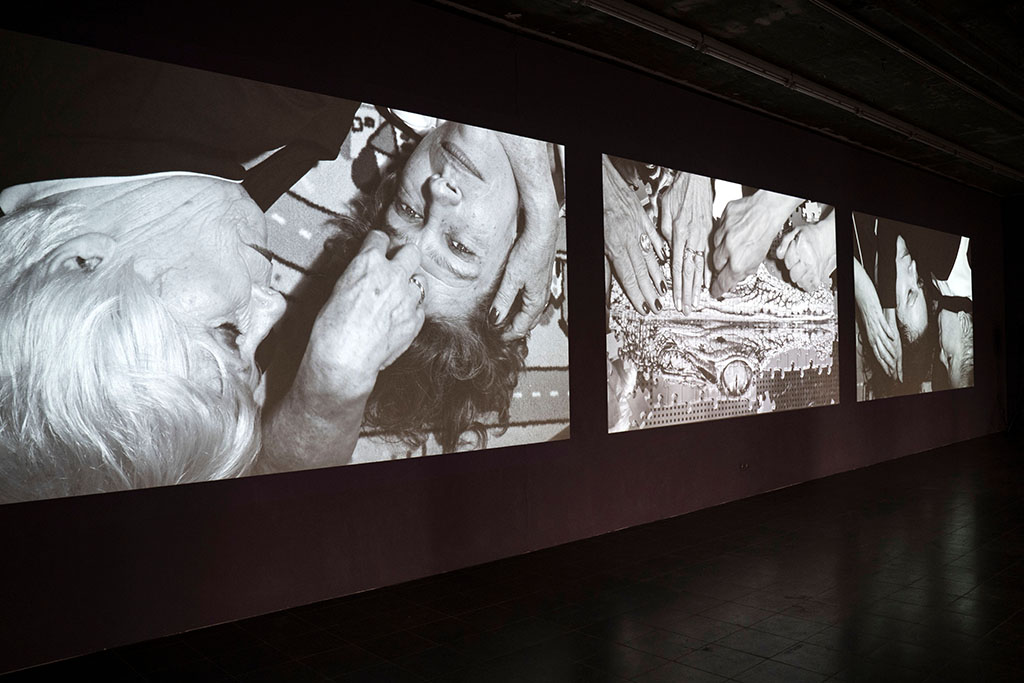Q & A with Jianling Zhang
What if women had the ability to reproduce without a partner? A horror vision? Or a paradise without men? Chinese artist Jianling Zhang explored this question in her installation. In our Q & A she reports on the genesis of the cinematic project.
Last year you applied for the Media Art Award of the Kunststiftung Ingvild and Stephan Goetz with your project proposal The First and Final Girl. The award came with 5,000 euros for the realisation of a new work. Now the finished 3-channel film installation is on view at the AkademieGalerie until Sept. 21. What is the work about?
The proposal originated from my interests in women’s reproduction power, especially the related research on parthenogenesis (the ability to produce offspring from unfertilized eggs). It's a phenomenon in invertebrates and increasingly found in normal sexual vertebrates. In this work, I attempt to visualise it as an existential situation: if we inherit and pass on the exact same genetic material with our grandma, mother, daughter and granddaughter, how does it change our perception of time, identity and body? The characters are situated somewhere in the future, they drift through different spaces while working, playing games, exploring and sharing their discoveries. However, their actions are constantly reframed by repetition and interruption. Thanks to Dop Lara Fritz’s suggestion, we film every shot as if it's a black and white photo under strong flash. If every photo is considered to be a frozen moment, I found it interesting to synchronise in three channels what’s in and out of the frame, what happens before and after pressing the shutter.
In which places did you shoot?
Kinderhaus „Die Sternschnuppen“, Sportschule Oberhaching and Kompetenzzentrum Demenz München, where the bodies learn, practice and in the end forget how to store knowledge and memory, to connect and exchange with each other. We filmed one day in each location. I tried to capture the similarities between the locations and bridge them with performances so that the stages of life could be diluted, as well as the boundaries between the locations.
Who are the protagonists in your film and where did you find them?
Barbara Altmann, Gabi Geist, Esther Straimer, Eva Tomanke played the role of “caretakers", who seem to work in an unknown institution. I found Theater „Die Runde 70“ (Retro-Avantgard-Theater von älteren, aber nicht nur für ältere Menschen) online and got in touch with Barbara and Esther, who introduced Evi and Gabi to me. Their brilliant intuitions and improvisations have brought lightness and playfulness to the filming process. Sometimes it’s more like playing PingPong than directing, it’s such a luxury and I’m grateful for it .
How did the collaboration go?
Except for collaboration with actresses, the creative input and efforts from my artist friends made this project possible (Yuchu Gao, Haha Wang, Bokyoung Jeong, Danni Chen, Chaeeun Lee). Their participation has activated the process of filming as a live event instead of a highly goal oriented production process, they have turned the filming days into a temporary yet vivid community where sensibilities from different artistic mediums could meet and respond to each other.
This year, the Media Art Award of the Kunststiftung Ingvild and Stephan Goetz is being offered for the second time. What recommendations can you give to future applicants?
There are countless ways to tell the same story. There are as many fork roads in realising the proposal. Embrace the uncertainties along the way and don’t forget to revisit the centre of the maze from time to time.
